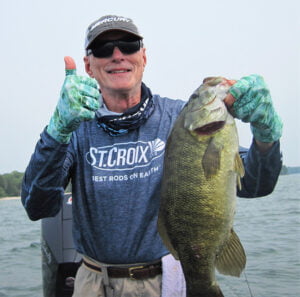 The mild temperatures of spring or fall (upper 50s to lower 60s) provide anglers with the ideal conditions for bass fishing. Bass fishing in the summer, on the other hand, is undoubtedly a challenge. The high temperatures mean bass feed only in the mornings and evenings before retreating into deeper waters for the rest of the day. Anglers must therefore take special care to successfully fish during the summer.
The mild temperatures of spring or fall (upper 50s to lower 60s) provide anglers with the ideal conditions for bass fishing. Bass fishing in the summer, on the other hand, is undoubtedly a challenge. The high temperatures mean bass feed only in the mornings and evenings before retreating into deeper waters for the rest of the day. Anglers must therefore take special care to successfully fish during the summer.
Use the right flies
Being selective in your choice of lures and flies can help you make a catch faster. For example, a frog fly is a must for summer bass fishing. Unlike regular flies that zip through the water, frog flies plunge to the bottom where they flit around before resurfacing. As a result, it moves plenty of water while making a loud noise, therefore attracting the attention of predators. Alternatively, a crayfish fly is a weighted wet fly which particularly well in warmer weather in lakes, rivers, and streambeds. While it’s a fairly small fly, it manages to do the job when needed.
Locate cool pockets of water
Successful bass fishing in the summer requires locating spring holes for their cool-water pockets. Bass flock to these cold, shadowy spots for relief from the summer heat. Sometimes you’ll be able to find these areas by consulting topographical maps, however, you may also need to use a stream thermometer. You can also check the terrain to find spring holes — they often occur on wide, sloping lake floors featuring valleys or significant rock structure. This is because precipitation collects on higher ground, permeates the cooling earth, and is then emitted from rocks or creek beds down below.
Ledge jumping
In the hot summer months, bass tend to congregate at the bottom of sudden drop-offs and ledges as a way of escaping the current. You’ll typically find these sorts of structures around river channels, creek channels, or banks gently sloping into water. Essentially, a ledge is any area with sharp depth change in water. You’ll then need to use deep-diving plugs to work out the depth location of the larger bass. Bouncing bait along the ledge will lure bass from hidden rock piles and overhangs.
Bass fishing in the summer doesn’t have to be difficult. Follow these simple yet effective tips and you’ll set yourself up for success.

